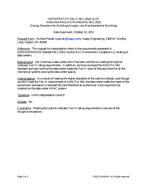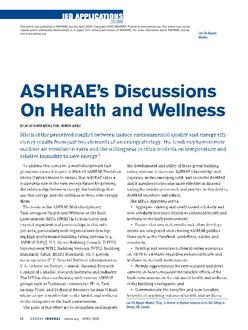Improving the insulation and solar heat gain characteristics of a home’s windows has the potential to significantly improvethe home’s overall thermal performance by reducing heat loss (in the winter) and cooling loss and solar heat gain (in the summer)through the windows.A high-quality installation will also minimize or reduce air leakage through the building envelope, decreasinginfiltration and thus reducing heat transmission through building envelope. These improvements all decrease overall annualhome energy use. In addition to improvements in energy efficiency, highly insulating windows can have important impacts onoccupant comfort by minimizing or eliminating the cold draft many homeowners experience near window surfaces that are noticeablycooler than the room temperature. Energy efficiency measures, such as highly insulating windows, also have the potentialto decrease peak energy use in a home, which can lead to measurable peak load decreases for a utility service territory if implementedon a large scale.
High-performance windows now feature triple-pane glass, double low-e coatings, and vinyl insulated frames to achieve Ufactorsaround 0.2 (the U-factor is the inverse of R-value, with units of Btu/h·ft² x °F, it represents the rate of heat transfer througha material), as compared to double-pane clear glass windows with a U-factor of 0.67, which are common in existing homes acrossthe United States. The highly insulating windows (as they will be referred to in this document) are now available from severalmanufacturers and have demonstrated the ability to yield considerable energy savings and thermal comfort improvements inhomes.
Presented at Thermal Performance of Exterior Envelopes of Whole Buildings XII, December 2013
Citation: Thermal Performance of Exterior Envelopes of Whole Buildings XII
Product Details
- Published:
- 2013
- Number of Pages:
- 10
- File Size:
- 1 file , 1.2 MB
- Product Code(s):
- D-BldConf13-14


